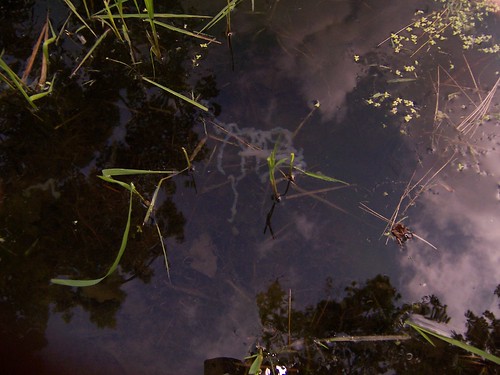 A dragonfly is a type of insect belonging to the order Odonata, the suborder Epiprocta or, in the strict sense, the infraorder Anisoptera. It is characterized by large multifaceted eyes, two pairs of strong transparent wings, and an elongated body. Dragonflies are similar to damselflies, but the adults can be differentiated by the fact that the wings of most dragonflies are held away from, and perpendicular to, the body when at rest. Dragonfly's life span is more than a year. There are three stage of dragonfly life cycle. The egg, the nymph and adult dragonfly. Most of the life cycle of a dragonfly is lived out in the nymph stage. Nymph can be found underwater in a lake or pond.
A dragonfly is a type of insect belonging to the order Odonata, the suborder Epiprocta or, in the strict sense, the infraorder Anisoptera. It is characterized by large multifaceted eyes, two pairs of strong transparent wings, and an elongated body. Dragonflies are similar to damselflies, but the adults can be differentiated by the fact that the wings of most dragonflies are held away from, and perpendicular to, the body when at rest. Dragonfly's life span is more than a year. There are three stage of dragonfly life cycle. The egg, the nymph and adult dragonfly. Most of the life cycle of a dragonfly is lived out in the nymph stage. Nymph can be found underwater in a lake or pond.Mating
The first step in mating occurs when the male grasps the female with his legs. He then clasps her behind the head with specialized appendages at the end of his abdomen. This head to tail position is called the tandem position. Near ponds dragonfly pair can be often seen cruising this position. The next step occurs when the female folds her abdomen under the male and remove a sperm packet. This circular mating position is call the wheel position. In some species the wheel position can be initiated while they are in flight.
Egg
 Female dragonfly laid their eggs near or in water, often on floating or emergent plants. For species that lay their eggs near water, development will not begin until the rains come and the water level rises. When lying eggs, some species will completely submerge to find good surface to lay their eggs. Some species will tap their tail on water surface to make the eggs sink, while some species use their ovipositors to pierce to plant material so they can place their eggs inside.
Female dragonfly laid their eggs near or in water, often on floating or emergent plants. For species that lay their eggs near water, development will not begin until the rains come and the water level rises. When lying eggs, some species will completely submerge to find good surface to lay their eggs. Some species will tap their tail on water surface to make the eggs sink, while some species use their ovipositors to pierce to plant material so they can place their eggs inside.Larva (Nymph / Naiad)
 Most of a dragonfly's life is spent in nymph (naiad) form, beneth the water's surface. Using extendable jaws they catch other invertebrates or even vertebrates such as tadpoles, fish, etc. They breathe through gills in their rectum, and can rapidly propel themselves by suddenly expeling water through anus. Some nymphs sit and wait for prey, while others are active stalkers. Nymph will mold or shed their skin about 10-15 times before they are mature. The larva stage of large dragonflies may last as long as five years. In smaller species, this stage may last between two months and three years. When the larva is ready to metamorphose into an adult, it climbs up a reed or other emergent plant. Exposure to air causes the larva to begin breathing. The skin splits at a weak spot behind the head and the adult dragonfly crawls out of its solid larva skin, pumps up its wings, and flies off to feed on midges and flies. The adult stage of larger dragonfly can last as long as four months.
Most of a dragonfly's life is spent in nymph (naiad) form, beneth the water's surface. Using extendable jaws they catch other invertebrates or even vertebrates such as tadpoles, fish, etc. They breathe through gills in their rectum, and can rapidly propel themselves by suddenly expeling water through anus. Some nymphs sit and wait for prey, while others are active stalkers. Nymph will mold or shed their skin about 10-15 times before they are mature. The larva stage of large dragonflies may last as long as five years. In smaller species, this stage may last between two months and three years. When the larva is ready to metamorphose into an adult, it climbs up a reed or other emergent plant. Exposure to air causes the larva to begin breathing. The skin splits at a weak spot behind the head and the adult dragonfly crawls out of its solid larva skin, pumps up its wings, and flies off to feed on midges and flies. The adult stage of larger dragonfly can last as long as four months.A new dragonfly emerged from exoskeleton
By grabing onto its exoskeleton, it pulls the rest of its abdomen out







2 comments:
Nice and interesting images!!
This a great page for anyone that is learning about dragonflies it has all the facts about dragonflies
Post a Comment